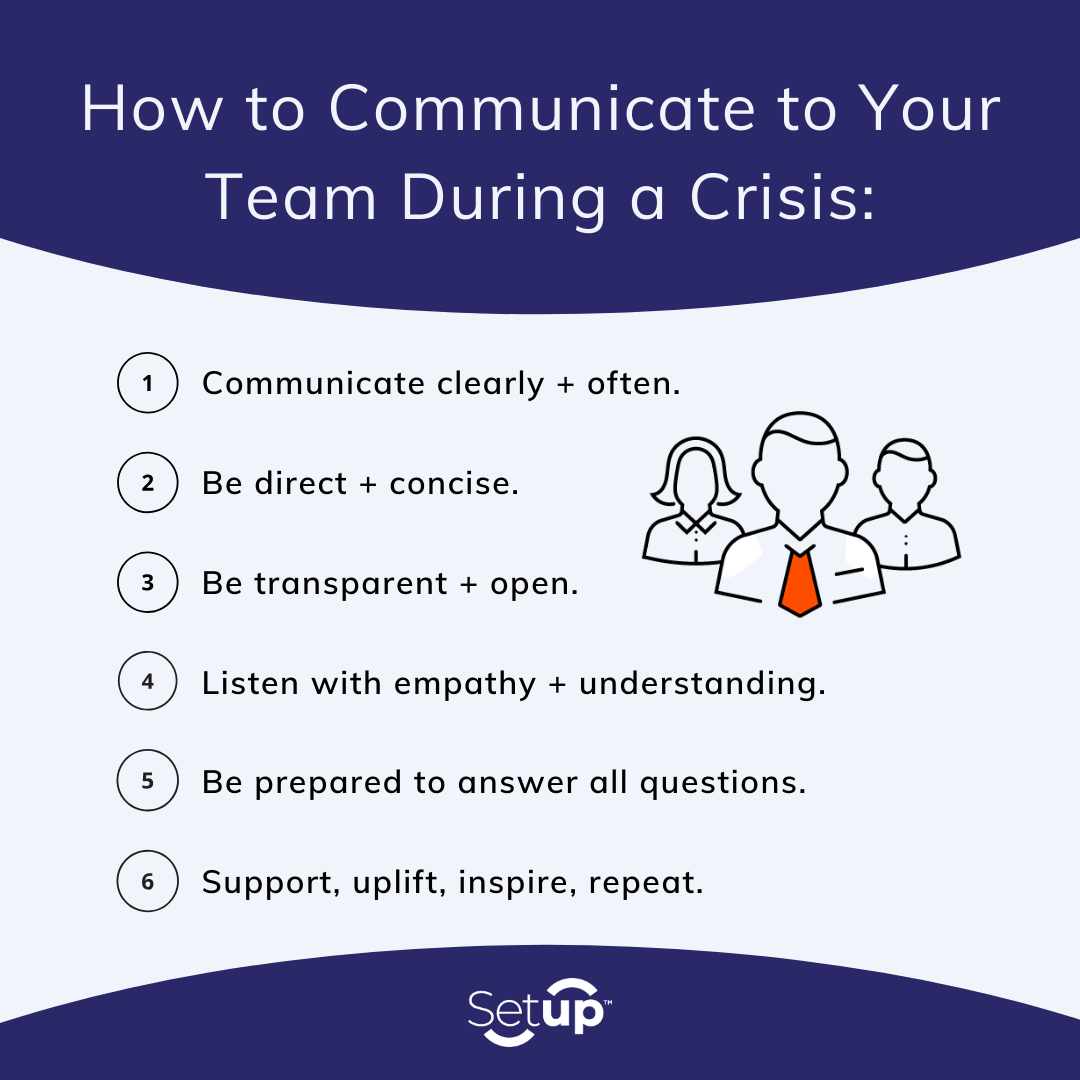The Importance of Internal Communication During a Crisis: Tips + Tricks
While companies spend a certain amount of time, thought, and money developing their external communication strategies for stakeholders and consumers, developing an internal communication strategy -- especially during a crisis -- is just as important.
Now that people are working remotely and have less face-to-face interaction, a cohesive internal communication strategy is vital for a company’s survival.
Internal Communication Strategy Methods
A well-oiled internal communications strategy focuses on efficiency and employees. Developing a structured process across departments increases:
Collaboration
Alignment
Company Culture
Conversations
Productivity
Employee Engagement
There are different types of internal corporate communication tools and methods that companies utilize.
Intranet / Forum
Intranet platforms like Jostle and Igloo are on a private network. They can host and segment all resources, company news / updates, and word documents for employees. Adding an instant messaging integration creates a forum that allows employees to engage in conversation regarding certain threads or topics.
Newsletters
Employees have to regularly check their email, so sending out a mass newsletter with pertinent company updates is convenient and easy for everyone. Visual newsletters’ content can also be easily consumed, and leaders can track employee open rates.
Video Chat
Meetings, virtual happy hours, onboarding processes, and webinars using video tools like Google Hangouts or Zoom allow employees to connect visually. Video chat is helpful, especially given the current social distancing with COVID-19, to interact with other people and not rely solely on direct messaging where tone or intention can be misread. Integrating fun video meetings with business ones can be beneficial to help morale and form bonds or deeper understandings of role functions across departments.
Instant Messaging
Instant messaging with tools like Slack, Hive, or Hangouts Chat make communicating quick. Feedback is instant, response time is faster, email inboxes are less cluttered, and back and forths are less formal with instant messaging. Companies can share resources with one another, search for old conversations, and segment discussion topics.
Employee Social Network
Yammer or Workplace by Facebook allow employees to connect and companies to share updates. Since employees are already active on social media, this is easier to adopt. Internal social networks also help build community and quickly spread company news.
Cultural Tools
Boosting team morale, reiterating a company’s values, and focusing on culture when people are working out of office with tools like Donut, Praisely, or Know Your Team is important for collaboration and the employee experience. The more appreciated employees feel and connected to one another, the more motivated they are to do their jobs. Especially since isolation comes with its own challenges -- lack of outside contact, constant interaction with family, stress from worldwide affairs, homeschooling children -- employees may need a boost from their job.
While each communication tool has its own strengths, some can be used in tandem. Tools like the Google Suite or Microsoft Teams incorporate multiple collaboration features to make organization centralized. The most productive action a company can take is to have designated, easy to find locations for everything.
Updating Internal Comm Processes
Once a tool or internal comms strategy is put into place, it needs to be relayed to the organization.
Update internal audiences by:
Outlining the new structure / processes for employees.
Having a dedicated person in charge of communicating new procedures.
Identifying a small decision-making division to make fast-acting, agile decisions to cut through bureaucracy and approval processes when needed.
Working with HR to prepare them for employee support.
Designating a source for updates (company performance, status, news) and a source (platform or person) for questions.
Providing managers with talking points and resources to handle employee stress.
Educating employees on the business’ “new truth.” Some businesses are shifting their models to support hospitals -- if this is the case, employees need to have an outline of the new structure and how their role pertains to it.
How Should Leaders Respond During a Crisis?
Employees are looking to leaders for guidance and clarity. Whether or not employees are scared, they have a right to be weary of the future and need to be met with compassionate responses.
For a leader to communicate effectively during a crisis, leaders need to:
Communicate clearly and often.
Be direct and concise.
Be transparent and open.
Listen with empathy and understanding to their employees!
Answer questions - even the tough ones.
Support, uplift, inspire, repeat.
Change is inevitable during a time of crisis. But, in order for a company to operate at maximum capacity, employees need to be aligned across teams. Hopefully these tools / processes help you more easily transition operations to work remotely. To gauge the effectiveness of the new procedures, be sure to survey team members for feedback.













Over the past year, we’ve watched the following patterns emerge across seemingly unrelated sectors: rising consumer expectations, demand for authenticity, growing complexity, and the tension between automation and human connection.
We interviewed multiple marketers from an array of industries in our blogs below, and we discovered consistent trends across the board. Check out all of our industry blogs throughout 2025 from leaders at Blackbaud, Hiscox USA, Mimedx, MONPURE, Kimberly-Clark Professional, and more.